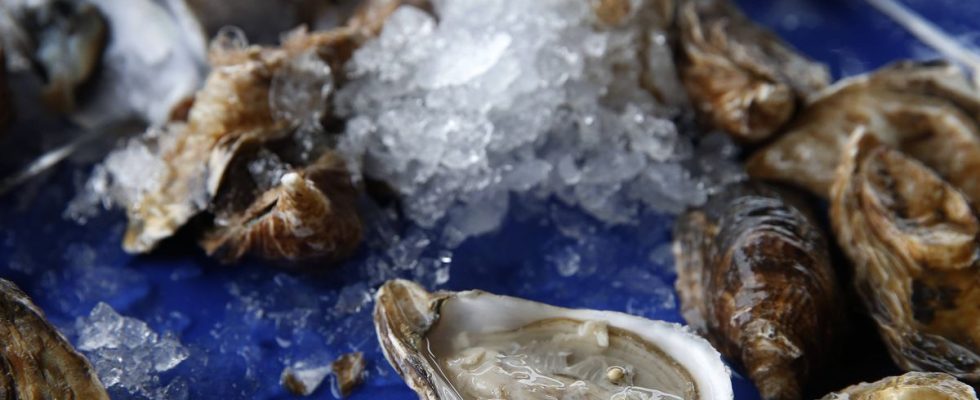Around forty people, including around twenty firefighters, fell ill after a meal organized on December 9 in Saint-Gilles-Croix-de-Vie. The harvesting and sale of mussels, oysters and clams from the Etang de Thau prohibited for an indefinite period. And today a hard blow for the oyster farmers of the Arcachon Basin. A few days before the New Year, their oysters were banned from sale after “several cases of collective food poisoning”. Traceability investigations are underway but several reports indicate that these oysters “are in question”, analyzes having confirmed the presence of “norovirus” in parks in the Basin. But, in fact, what is the “norovirus” which is ruining our lives at the end of the year?
What is “norovirus”?
Norovirus is the virus responsible for gastroenteritis. The “norovirus”, in all its forms, causes around 219,000 deaths per year worldwide, especially in the least developed countries, and represents a burden of 64 billion dollars, estimates a study published in 2021 in the American journal Plos One.
This Thursday, the French Public Health Agency (SPF) indeed noted that there is an “increase in emergency visits” in Gironde “for gastrointestinal symptoms linked to the same food origin”. The “norovirus” spotted in the region also causes gastroenteritis, which “manifests itself, after an incubation period varying from twenty-four to seventy-two hours, by diarrhea and vomiting which can occur accompanied by nausea, abdominal pain and sometimes fever,” explains SPF. Symptoms usually last a few days, although “the main complication is acute dehydration, which occurs most often at the extreme ages of life.” However, if these symptoms appear disproportionately, you should not hesitate to consult your GP, recalls the site conso.gouv.fr.
According to the Gironde prefecture, the symptoms noted in the region “are indeed those of acute gastroenteritis and no serious cases have been reported to date”. A previous study, published in 2016 this time, estimates that “noroviruses” sicken nearly 700 million people around the world each year.
How do you get it?
There is no antiviral or vaccine against this virus yet. Transmission occurs between humans but this virus can also “be transmitted through food by ingestion of water or food, consumed raw or lightly cooked”, explains Public Health France on its website. The food can be contaminated by the person carrying the virus who prepared it or, again according to the health agency, following “contamination during production by contact with water contaminated by excrement” .
Where does this “norovirus” which would have contaminated the waters of the Basin come from?
Producers say they are “victims of the saturation of wastewater and rainwater networks” after severe bad weather in the fall, which causes “overflows into the natural environment” contaminating the breeding areas. For oyster farmer Thierry Lafon, the problem has been known for a long time: “we have a very adequate sanitation network but the management of rainwater is lamentable. » “We had heavy rains for a month and a half, the water tables were level and a few centimeters of water on the road were enough to invade the sanitation system. The pipes no longer have the capacity to pass all this flow and it overflows,” explains the producer to Gujan Mestras.
“At the end of the day, you can have mixtures of wastewater and rainwater flowing into the natural environment,” confirms a manager from the Syndicat intercommunal du bassin d’Arcachon, network manager. We are working on the subject (…) to improve the protection of the territory against bad weather. »
How to overcome ?
As for oysters, “the only thing to do is to put everything back in the park (…) The oyster is a filter feeder, it will decontaminate itself with the renewal of water in the basin”, answers Maïron Martin, oyster farmer in Arès, referring to a period of twenty-eight days. On the sick side, “the measures recommended against the flu are the same for gastroenteritis”, indicated Jean-Paul Hamongeneral practitioner in a previous article in 20 minutes. Therefore, it is essential to wash your hands well, because “germs hang around on inert surfaces”, and to take precautions when coughing or sneezing.
Finally, it is possible to get rid of the virus in forty-eight hours if you follow a fairly strict but “essential” diet, according to Jean-Paul Hamon. Without fiber, the menu ideally consists of rice, carrot puree and applesauce or even crushed bananas. Above all, you should avoid green vegetables, dairy products, sweets and strong teas and coffees. Another important indication: “you need to drink a lot of water, two liters per day is best”.

